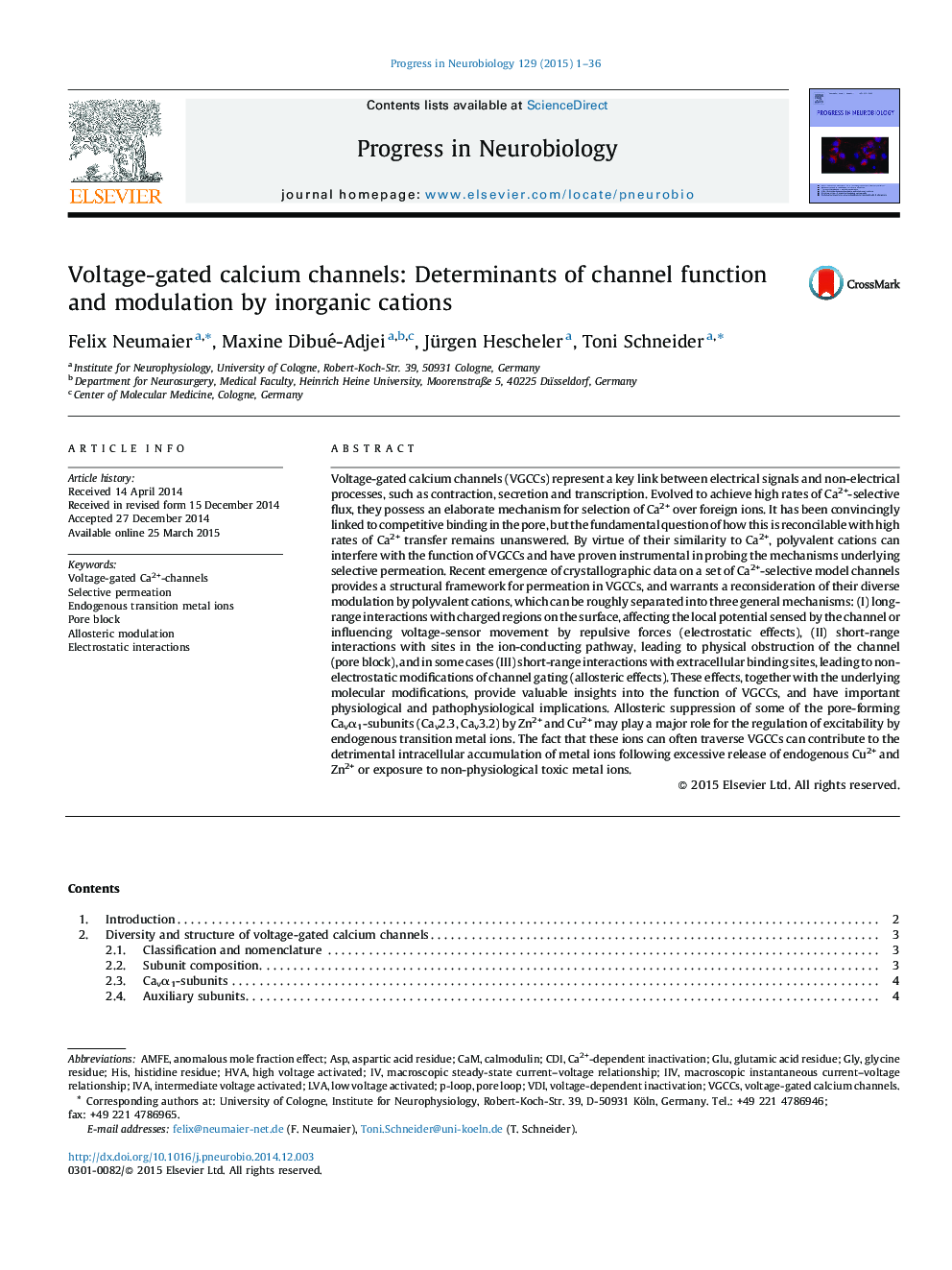| کد مقاله | کد نشریه | سال انتشار | مقاله انگلیسی | نسخه تمام متن |
|---|---|---|---|---|
| 4353290 | 1615382 | 2015 | 36 صفحه PDF | دانلود رایگان |
• Voltage-gated Ca2+-channel function and modulation by inorganic cations are reviewed.
• Long-range interactions with surface charges can affect voltage-sensing.
• Short-range interactions with the ion-conducting pathway can produce pore block.
• Binding to high-affinity metal binding sites can allosterically modify channel gating.
• All mechanisms have important physiopathological and/or experimental implications.
Voltage-gated calcium channels (VGCCs) represent a key link between electrical signals and non-electrical processes, such as contraction, secretion and transcription. Evolved to achieve high rates of Ca2+-selective flux, they possess an elaborate mechanism for selection of Ca2+ over foreign ions. It has been convincingly linked to competitive binding in the pore, but the fundamental question of how this is reconcilable with high rates of Ca2+ transfer remains unanswered. By virtue of their similarity to Ca2+, polyvalent cations can interfere with the function of VGCCs and have proven instrumental in probing the mechanisms underlying selective permeation. Recent emergence of crystallographic data on a set of Ca2+-selective model channels provides a structural framework for permeation in VGCCs, and warrants a reconsideration of their diverse modulation by polyvalent cations, which can be roughly separated into three general mechanisms: (I) long-range interactions with charged regions on the surface, affecting the local potential sensed by the channel or influencing voltage-sensor movement by repulsive forces (electrostatic effects), (II) short-range interactions with sites in the ion-conducting pathway, leading to physical obstruction of the channel (pore block), and in some cases (III) short-range interactions with extracellular binding sites, leading to non-electrostatic modifications of channel gating (allosteric effects). These effects, together with the underlying molecular modifications, provide valuable insights into the function of VGCCs, and have important physiological and pathophysiological implications. Allosteric suppression of some of the pore-forming Cavα1-subunits (Cav2.3, Cav3.2) by Zn2+ and Cu2+ may play a major role for the regulation of excitability by endogenous transition metal ions. The fact that these ions can often traverse VGCCs can contribute to the detrimental intracellular accumulation of metal ions following excessive release of endogenous Cu2+ and Zn2+ or exposure to non-physiological toxic metal ions.
Figure optionsDownload high-quality image (250 K)Download as PowerPoint slide
Journal: Progress in Neurobiology - Volume 129, June 2015, Pages 1–36
